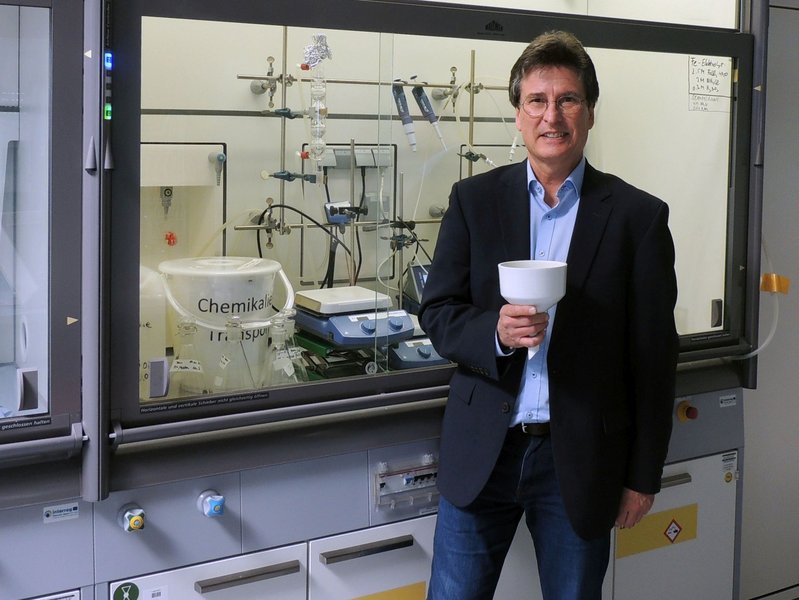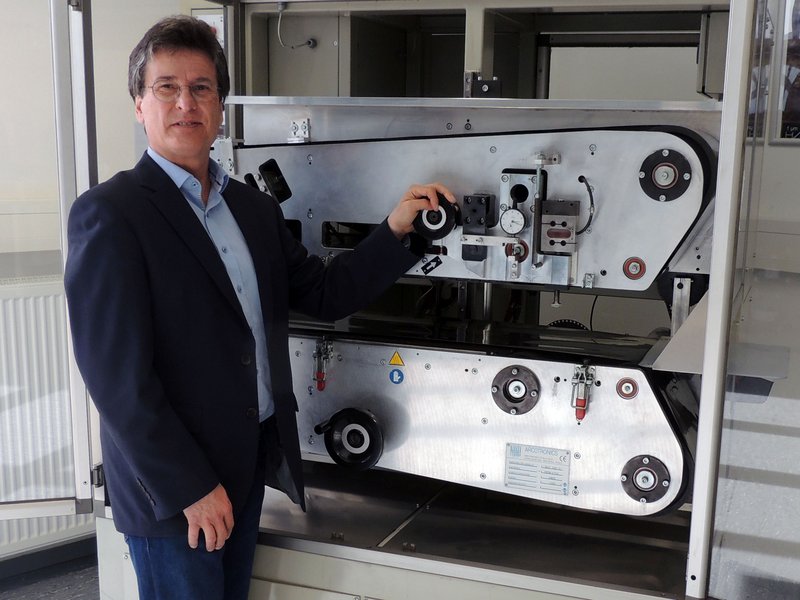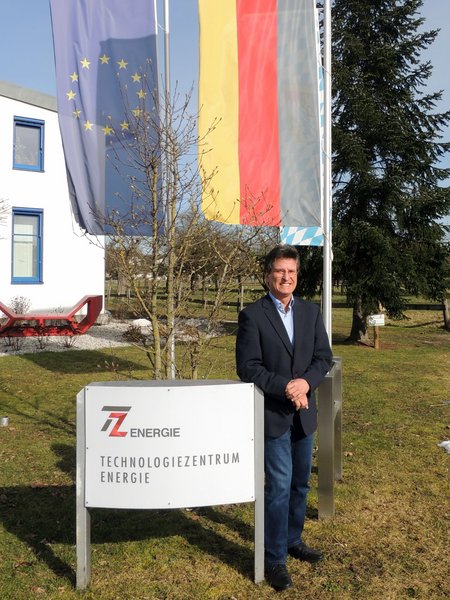A multimillion euro EU project aiming to make European energy grids more effective and secure got underway at the end of 2020 under the leadership of the Energy Technology Centre of the Landshut University of Applied Sciences. As part of this, eleven scientific institutions and companies from Germany, Italy, Spain, the Czech Republic, Austria, Portugal and Russia are working on an innovative energy storage system. In this interview, project manager Prof. Karl-Heinz Pettinger explains what this super storage system is all about, and how a university of applied sciences ended up coordinating this major European project.
Prof. Pettinger, HyFlow is a very ambitious project when you consider the fact that eleven international partners are working together here to advance the energy revolution in Europe. What’s behind this project?
Prof. Pettinger: An energy revolution is pivotal for a safe, sustainable and economically successful future. To do this, our energy supplies need to fundamentally change: away from nuclear and fossil fuels – and on to renewable energies like wind energy or solar power. Electrical energy is distributed via grids, i.e. the grids don’t store any energy, they only distribute it at the speed of light. However, a problem with such renewable energies is that they are not produced continuously, but only when the sun is shining or the wind is blowing. Modern energy grids need to buffer these irregularities. Efficient and dynamic storage systems are required to temporarily store the energy not currently used during power peaks. They contribute to the imperative immediate and short-term reserves. The systems should be safe, affordable and environmentally friendly. This is where our new research project, for which the EU is providing a total of four million euros in funding, comes in.
The fact that a university of applied sciences is heading up such a major EU project is quite unusual, isn’t it? How did that come about?
Prof. Pettinger: Indeed, the HyFlow project is a flagship project for the Landshut University of Applied Sciences. As far as I know, we are the second university of applied sciences in Bavaria to head up a HORIZON2020 project – an absolute exception until now. The idea for HyFlow came about in 2019 on the fringes of a conference for the INTERREG research platform FSTORE. That’s where three of the eleven partners sat down together for the first time and discussed the potential project. This was followed by numerous other discussions on project development. The early involvement of our university’s research department was crucial for the success of these discussions. The support of a research expert experienced in international projects helped enormously in the development of the proposal. Gradually, we were able to involve other partners and expand the consortium along the supply chain from research through to large-scale application. There are now eleven partners from seven countries – it is indeed an ambitious major project. However, I am confident that we can guide the project to a successful conclusion.
The fact that Landshut University of Applied Sciences is heading up and coordinating the project is evidence of great self-confidence. Are you getting support too?
Prof. Pettinger: Of course, a research project like this cannot work without partners. We are being supported by technical and scientific supervisory boards. The Bavarian Research Alliance (BayFOR) helped us with the application and advised us with regard to the strategic direction. As a project partner, BayFOR is also supporting us with project management and communication activities. The fact that such an institution exists in Bavaria is a valuable support for us as a university.
What is special about the energy storage system you are developing together?
Prof. Pettinger: We’re researching a high-performance, hybrid storage system that combines two technologies with each other: a high-performance vanadium redox flow battery and a supercapacitor. The special thing about it is that we’re bringing together the best of two worlds. A redox flow battery has a large storage capacity, but charges and discharges slowly. The supercapacitor, on the other hand, has extremely short charging and discharging times with low energy density, and makes immediate reserves available for grid stabilisation. So, we’re combining the benefits of both systems: high storage capacity and high performance.
What will the new hybrid system be able to do in the future that previous energy storage systems have been unable to do?
Prof. Pettinger: The new storage system will, for example, be able to balance the energy requirements much more flexibly during high load peaks, and can do so by the second or over a period of hours. That takes enormous pressure off the grids. Furthermore, it works in as environmentally friendly a way as possible by not using any critical resources, such as rare-earth elements. And it may even be more cost effective than previous storage systems.
What impact would a new storage system like this have in Europe?
Prof. Pettinger: We want to use the new system to contribute to guaranteeing security of supply for energy grid systems in Europe. In addition, the project increases Europe’s competitiveness in the battery sector for stationary storage applications. Energy knows no boundaries. Energy supply and distribution is a European interest. In border regions especially, cooperation with neighbouring countries and their grid associations is obligatory. Grid stabilisation has been successfully supported by a district storage system in Japan for 30 years.
What are the benefits we consumers would have in day-to-day life?
Prof. Pettinger: With the storage system, energy obtained from renewable sources can be used locally or regionally, and does not need to be transported great distances. In HyFlow, these hybrid storage systems are being developed and dimensioned with the user expertise of municipal utility companies, manufacturing industrial companies and a very large airport operator, and their benefits for them are being investigated. Usage in municipal utility companies are beneficial to citizens in residential districts as nodal storage facilities. The number of photovoltaic or wind power systems installed can be increased locally without destabilising the grid. Industrial companies and airports have strongly fluctuating requirements for electrical power, which can be buffered using this system in a way that is cost-effective and beneficial to the grid.
What are you particularly proud of personally with this project?
Prof. Pettinger: I’m particularly happy that the EU gave our funding application the highest possible score, i.e. 15 out of 15 points. That is very rare, and an honour for the whole team. And it proves that all the work and the search for project partners were worth it. This success would not have been possible without such a network from Portugal to Russia.
Questions asked by Veronika Barnerßoi.
Photo: Landshut University of Applied Sciences
(free to use where source is indicated)



